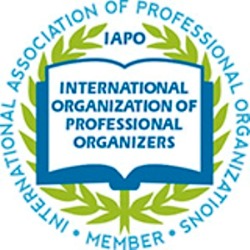The basic thinking behind Colour Coded cleaning is; you use colours to segregate the different types of areas you have to clean. The British Institute of Cleaning Science (BICSc) developed and refined their Recommended Colour Chart for the Cleaning Industry. Their goal was to standardise cleaning practices in terms of the prevention of cross-contamination in an easy-to-understand way. Particular colours are designated for cleaning areas in which certain risks have been identified. These colours can then be transferred as colour coding on cleaning equipment and products which are to be used in these areas only. This will help to set apart these cleaning items so helping to prevent the transfer of bacteria through cross-contamination to other areas. The need for colour coding is particularly significant in homes, hospitals and other healthcare sites where it is especially important to promote thorough hygiene standards but this is, of course, good practice in any setting.
Cross-contamination is one of the highest risks in the spread of infection. To most effectively reduce this risk, it is strongly recommended that everyone in the cleaning industry follows the same procedures that have been outlined by the British Institute of Cleaning Science.
Colour coded cleaning is the process of designating colours to cleaning equipment in certain areas of a business or building, reducing the spread of germs across areas and increasing hygiene throughout the venue. The four main colours used and to separate out areas such as bars, public areas, kitchen & food preparation areas and washrooms, are red, blue, green and yellow.
Colour coding is used throughout a variety of industries and trades where health and safety is paramount, in particular catering and healthcare as cross contamination will lead to illness. The cleaning equipment colours are representative to their area of use. For example, you would not want to clean the floors of a kitchen with a mop that has been previously used to clean the bathroom floors. Colour coding can be broken down into 4 areas:
For this system to work, you will need to assign different cleaning equipment to each area, with coloured handles, heads or bristles to make it easily identifiable. This hygienic cleaning system can be applied to any cleaning equipment that is used in each area; from mops and brushes to cloths and gloves.
Within your business or home what cleaning equipment is colour coded that helps you keep your business as hygienic as possible? The list is broad, however, here’s the top three that every business should have as a priority:
With these three items you should be able to ensure the hygiene of your premises never slips. Extra equipment, such as, cleaning cloths and cleaning buckets should also be considered for a thorough and strict colour coded cleaning environment. For example, you wouldn’t clean a school classroom desk, where children are going to work; with the same cloth you have just used to wipe the men’s urinals with, would you?

Colour coordination of cleaning products can vary from business to business and the system you choose is entirely up to you. However, the above guide is the most widely accepted system that most establishments adhere to. The colour you assign to each area is your choice, HOTMOPS staff members are trained on this system . There are, however, laws and regulations for healthcare establishment that must be followed to ensure patient care.
HOTMOPS color code simply because it reduces cross-contamination which in turn reduces the risk of infection or in some extreme cases death. Using a single mop to clean every floor in a restaurant, for example, can spread bacteria from the washrooms and toilets to kitchen and food preparation areas. This carries with it an inherent risk of cross-contamination and consequently, illness. Applying a colour coded system to segregate sensitive areas from one-another is the most efficient and effective way of reducing the risk of cross-contamination.
Our staff know exactly what colours are for which areas. The best way we have achieved this is t in-depth training highlighting the importance of colour coded equipment. As a reminder, we clearly mark posters at eye level in the cleaning cupboard. We state what colours are used for what areas, for example, cleaning a washroom is confusing when it comes to segregation. To make it clear, the actual Toilet bowl and the toilet floor should be one colour, Red preferably, and then all the other surfaces in the washroom, the sinks, the partitions and the doors, should be another colour i.e yellow.
Red represents high risk and is used to denote areas such as toilets and urinals, as well as washroom floors.
Yellow is intended for use in clinical settings. While red products are used for washroom toilets and floors, yellow products are used for other washroom surfaces and sinks, ensuring no cross-contamination between the two (despite being in the same vicinity).
Green is used for kitchens and bars, as well as factories. Uncooked fish and meat pose a high risk of cross-contamination, and it is therefore crucial to segregate cleaning materials used in these areas.
Blue is used for low risk areas, such as classrooms and offices. Since there is a low risk of cross-contamination, these products can be used for a wide range of surfaces, including desks, hallways, window ledges and general dusting and polishing.

